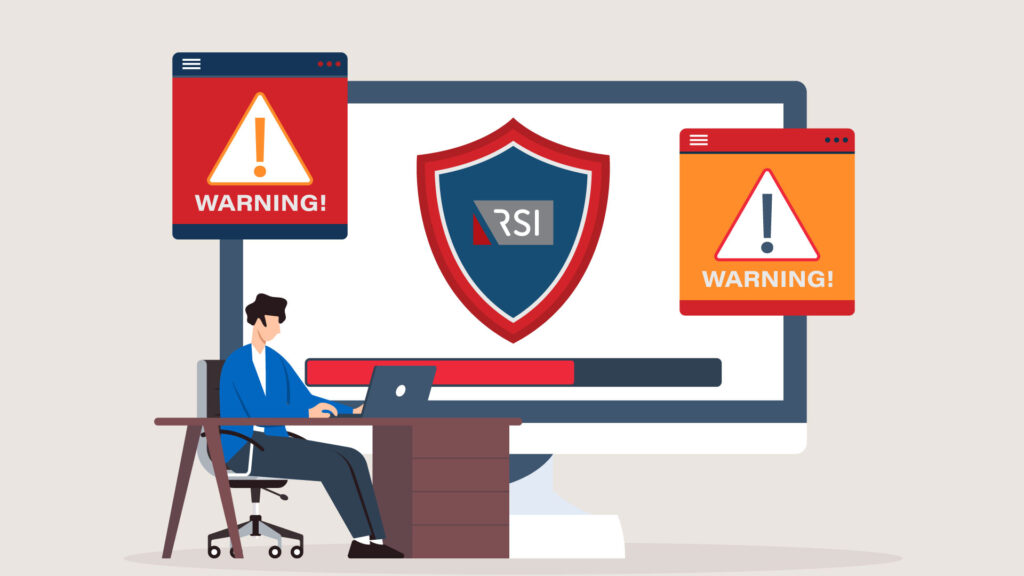In cybersecurity, identifying vulnerabilities is only half the battle. To build a strong defense, organizations must regularly scan for weaknesses and test their systems through penetration testing. Penetration testing and vulnerability assessments are both essential, but they serve different purposes.
This guide explains how each works, when to use them, and how they can work together to protect sensitive data and critical systems.
What is Penetration Testing?
Penetration testing, also called pen testing, is a cybersecurity practice where ethical hackers simulate real-world attacks to uncover and exploit security gaps before malicious actors can. Security professionals use the same tools, tactics, and procedures as cybercriminals to evaluate how well defenses perform under realistic conditions.
A penetration test helps organizations:
- Identify and validate exploitable vulnerabilities
- Assess detection and incident response readiness
- Meet compliance requirements (PCI DSS, HIPAA, NIST, and others)
- Demonstrate strong security practices to clients and stakeholders
Types of Penetration Testing
Penetration tests vary depending on the target environment. Common types include:
- External Testing: Simulates attacks from outside the network (e.g., internet-based threats)
- Internal Testing: Models insider threats, such as malicious or compromised employees
- Web Application Testing: Focuses on vulnerabilities in websites and applications
- Wireless Testing: Evaluates the security of Wi-Fi and other wireless networks
- Social Engineering: Tests employee response to phishing, baiting, or pretexting attempts
Penetration Testing Methodologies
Different penetration testing methodologies depend on how much information the tester has before the engagement:
- Black Box: No prior knowledge of the system, realistic but time-consuming
- White Box: Full system knowledge, efficient but less realistic
- Gray Box: Partial knowledge, balances realism with efficiency
Organizations should conduct penetration testing at least annually or after significant infrastructure changes. Many compliance frameworks including PCI DSS, HIPAA, and NIST, require regular penetration testing as part of a comprehensive security strategy.
Need a Penetration Test? Learn more.
Key Differences Between Pen Tests and Vulnerability Scans
| Category | Vulnerability Assessment | Penetration Test |
| Purpose | Identify and rank known weaknesses | Simulate real-world attacks to exploit vulnerabilities |
| Approach | Automated scanning | Manual + automated, attacker mindset |
| Output | Risk report with severity scores | Proof-of-concept attacks, security improvement guidance |
| Frequency | Quarterly or more often | At least annually, or after major changes |
| Compliance Fit | Useful for ongoing monitoring | Required for PCI DSS, HIPAA, and others |
| Cost & Complexity | Lower cost, less intrusive | Higher cost, deeper insights |
Why You Need Both Vulnerability Assessments and Penetration Testing
A vulnerability assessment shows what could be exploited, while penetration testing demonstrates how an attacker would exploit it. Used together, they provide a holistic view of your security posture, identifying risks and validating which ones are truly exploitable.
This combined approach enables security teams to:
- Prioritize fixes based on real-world impact, not just theoretical flaws
- Maintain continuous security improvement through remediation and retesting
- Meet regulatory expectations from PCI DSS, HIPAA, NIST, and other frameworks.
Example workflow:
- Start with a vulnerability assessment to uncover broad weaknesses
- Follow up with penetration testing to validate and measure exploitability
- Remediate identified issues and retest to confirm gaps are closed
Many compliance standards recommend or require both methods to demonstrate due diligence and ensure organizations stay ahead of evolving threats.
How RSI Security Can Help With Penetration Testing and Vulnerability Assessments
At RSI Security, we provide both penetration testing and vulnerability assessment services to help organizations strengthen their defenses and meet compliance requirements. Our cybersecurity specialists deliver tailored testing programs based on your industry, infrastructure, and regulatory needs.
With RSI Security, you can:
- Schedule one-time or recurring penetration testing engagements
- Implement ongoing vulnerability management for continuous protection
- Ensure compliance with frameworks like PCI DSS, HIPAA, and NIST
- Gain actionable insights to remediate risks before attackers exploit them
Get started today by purchasing a penetration test or vulnerability scan directly from our online store, or request a complimentary consultation with our experts.
Request a Consultation for Penetration Testing
